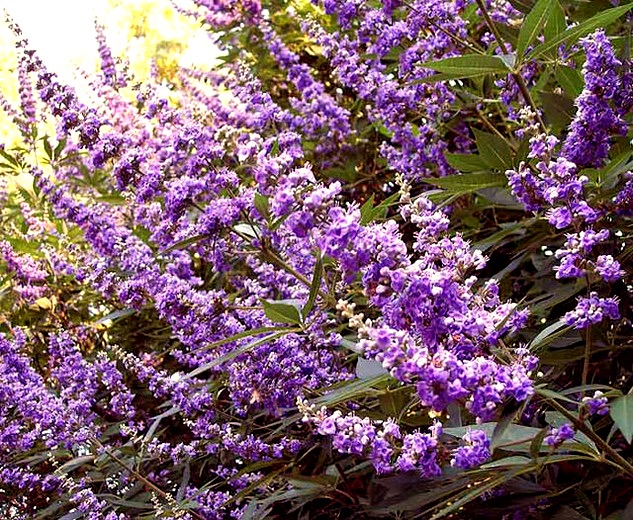With the ability to become a staple in any garden, the Vitex Agnus-Castus Shoal Creek Tree, also known as the “Chaste Tree”, is one of nature’s most beautiful flowering trees.
The Vitex blooms blue flowers throughout the majority of the year, sometimes even budding pink, purple, and white flowers. The Shoal Creek, the most popular variety of its genus, has blue-violet flowers that are largely winter-hardy. Therefore even when the weather drops in some regions – specifically in the Southern United States – the tree will remain lush and beautiful throughout the winter months.
The “Chaste Tree” is a multi-stemmed deciduous shrub that grows upright. It measures up to 10-15 feet tall, and spreads at around the same width at 10-15 feet. The tree is largely used as an ornamental tree, although it has some shading and medicinal qualities as well. Within your yard, it works best as stand alone specimen, much like a centerpiece of your lawn. According to Southern Living, Vitex trees are also attractive in a row along a property lines or driveway.
The Chaste Tree is a native of southern Europe and central Asia, thriving best in the Mediterranean-temperate climate. It prefers prolonged periods of sunlight while well-drained, needing medium amounts of moisture. Once established the tree is very drought-tolerant, however it will grow faster with supplemental summer water. Unfortunately, It is not entirely low maintenance, but will require regular pruning to produce an attractive multi-trunked tree. Because it grows quicker than most trees, feel free to prune as much as you see fit.
The fruit and seed of the Vitex are often used to make medicine for a variety of purposes. To this day, the chemicals produced by the tree are used to treat ailments affecting women. For example, medicines that treat menstrual irregularities, Premenstrual Syndrome, and menopause contain chemicals from this tree. Vitex Agnus-Castus also contains chemicals used to prevent miscarriages, and treat women throughout their pregnancies. In general, the Chasteberry was used to regulate and maintain the female reproductive system during periods of irregularities.
Herbs from this tree also have another historical relevance. According to Herb Wisdom, the fruit of the “Chaste Tree”, was used to control and suppress sexual desires. In Roman times, the herb was used by wives of soldiers to suppress such desires while their husbands were abroad at war. During the medieval ages, monks often used it as a food spice at monasteries for similar purposes, hence the Chasteberry’s other nickname, “Monk’s Pepper.”
If you liked this post and would like to read more on our selection of trees and shrubs, check out our twitter @SEGrowers for more. Thanks for reading !
